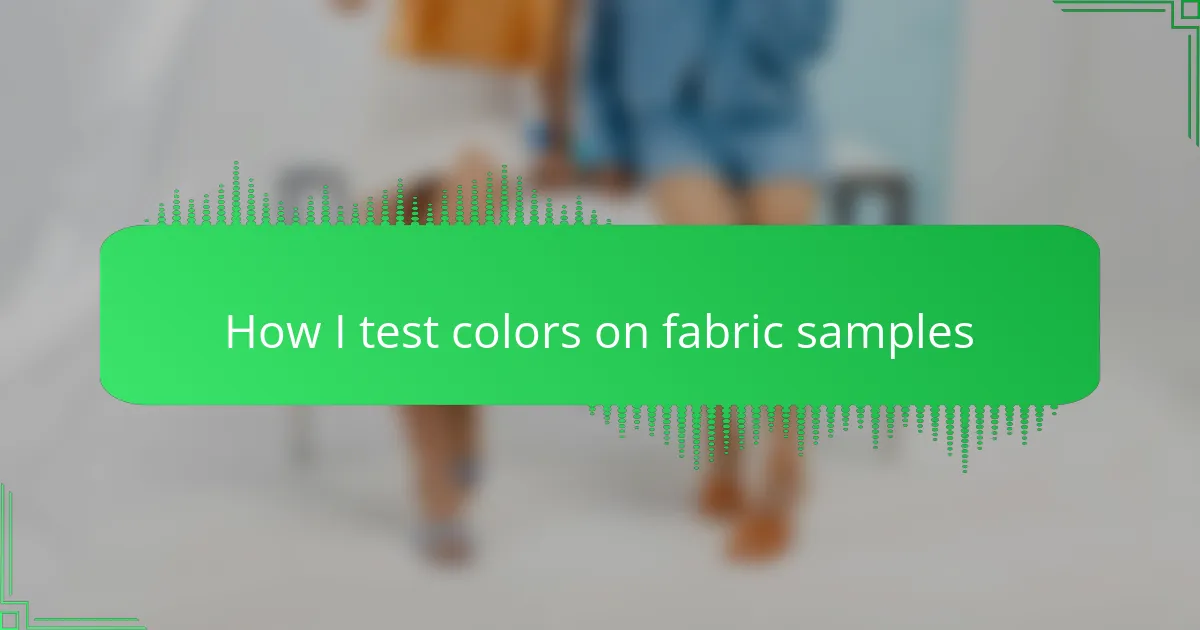Key takeaways
- Color testing on fabric is essential to ensure colors match expectations and avoid costly mistakes after production.
- Using tools like Pantone cards, fabric swatch books, and proper lighting can significantly enhance the accuracy of color evaluation.
- Preparing fabric samples correctly, including pre-washing and consistent sizing, is crucial for reliable color testing results.
- Evaluating test results requires patience, attention to detail, and thorough note-taking to ensure color accuracy aligns with the original design intent.
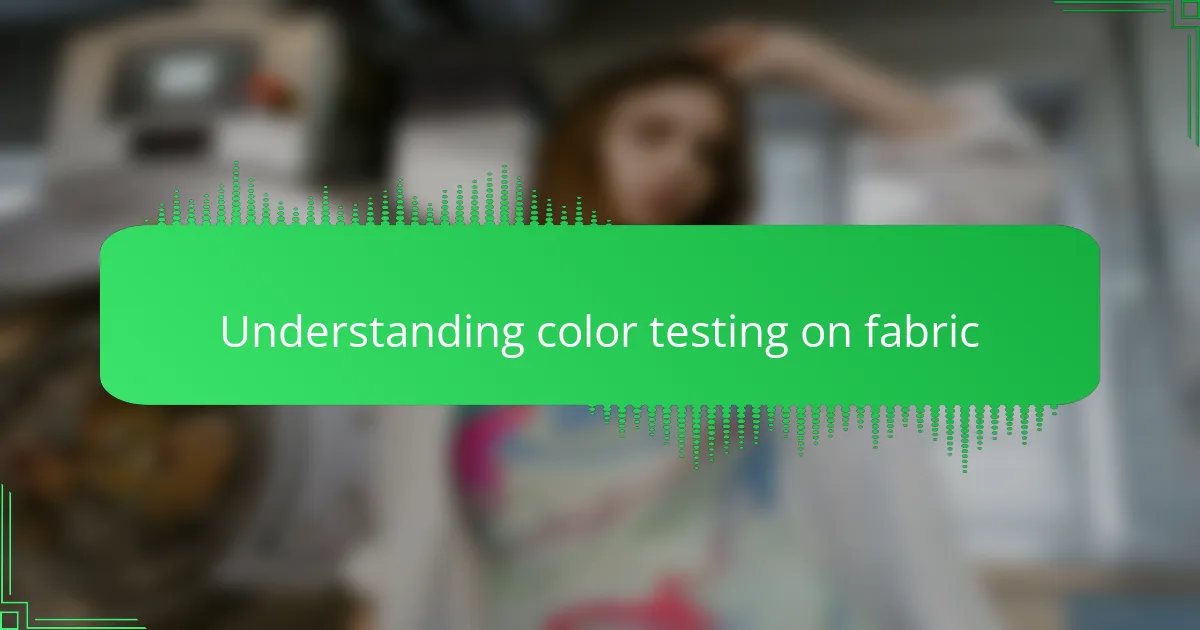
Understanding color testing on fabric
Understanding color testing on fabric is crucial because colors can look very different once printed on textiles compared to how they appear on a screen. From my experience, some colors that seem vibrant digitally can turn dull or too intense on fabric, so testing helps avoid costly mistakes. It’s a step that I’ve learned to trust deeply, especially when working with intricate designs where color accuracy is non-negotiable.
| Testing Method | Advantages |
|---|---|
| Digital Proofing | Quick and cost-effective but may not reflect true fabric color |
| Printed Fabric Swatches | Shows accurate color and texture on actual fabric |
| Color Matching with Pantone Cards | Standardizes color across different production stages |
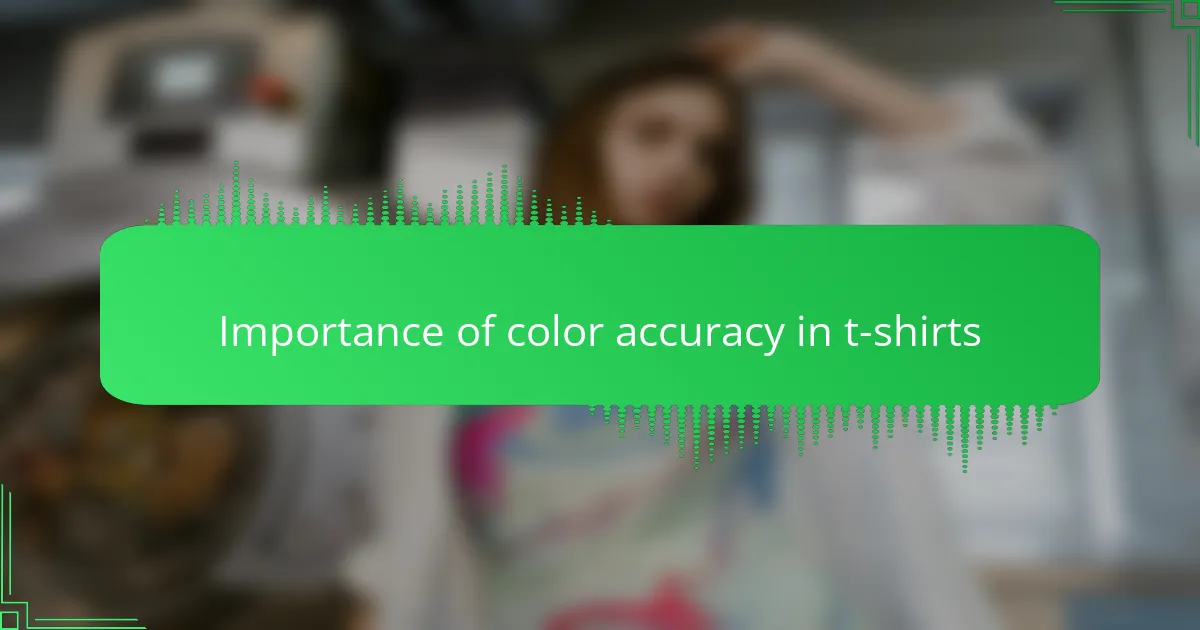
Importance of color accuracy in t-shirts
Color accuracy in t-shirts makes a difference between a design that pops and one that falls flat. I’ve seen how a slight shift in shade can change the entire vibe of a shirt, impacting customer satisfaction deeply. Getting the color just right means the design stays true to the original vision, which is crucial in my work.
| Aspect | Why It Matters |
|---|---|
| Brand Consistency | Ensures that colors match brand identity exactly |
| Customer Expectation | Accurate colors meet what the customer envisions and orders |
| Design Integrity | Preserves the artist’s original concept and impact |
| Print Quality | Prevents issues like fading or unwanted hues |
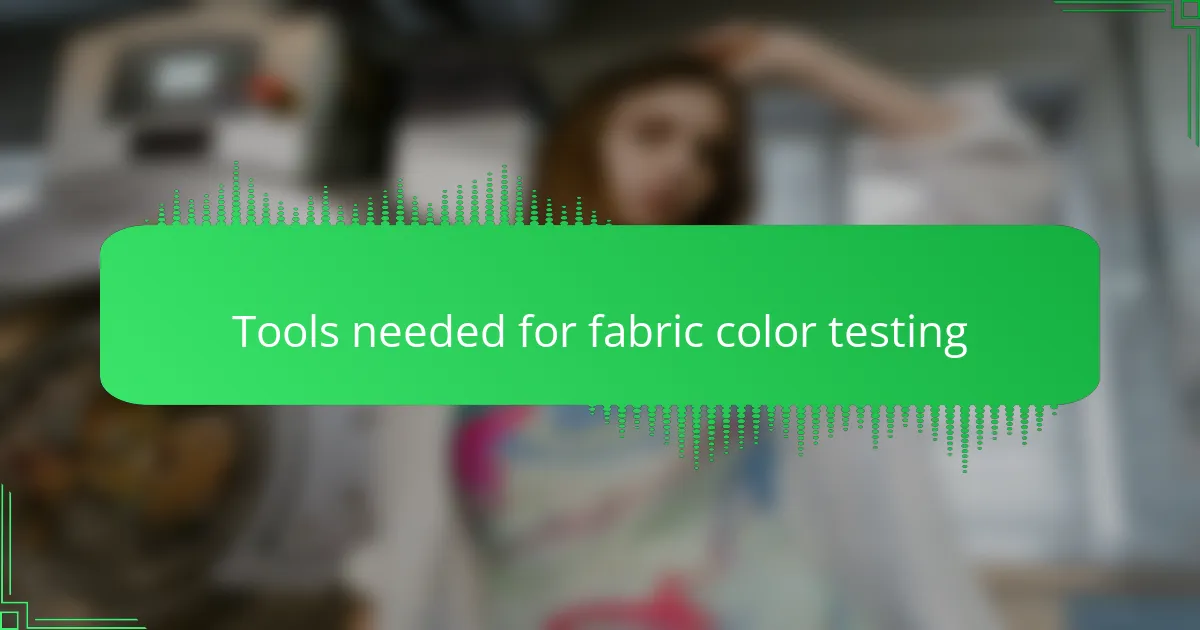
Tools needed for fabric color testing
When I test colors on fabric samples, having the right tools is essential to make sure what I see is what I get. I always start with a good set of Pantone color cards because they act like a universal language for colors—I can compare the fabric directly to a standardized shade, which really saves me from guesswork. Have you ever matched a color by eye only to find it completely off in production? That’s exactly why these cards became my go-to.
Besides the Pantone cards, I rely heavily on swatch books that include actual printed fabric samples. There’s something about holding and feeling the texture with the color right there that digital images just can’t capture. It’s like getting a sneak peek of the final product. I remember one project where a vibrant red on screen looked more like a muted coral on this swatch—catching that early was a huge relief.
Finally, tools like good lighting and a magnifying lens round out my testing kit. Colors can shift dramatically under different lights, so I always test under natural and artificial light to avoid surprises. I’ve found that a small magnifier helps me scrutinize how the dye sits on the fabric fibers, giving me insights into potential color bleed or unevenness that you simply can’t spot with the [censured] eye. These little details really make the difference when aiming for perfection.
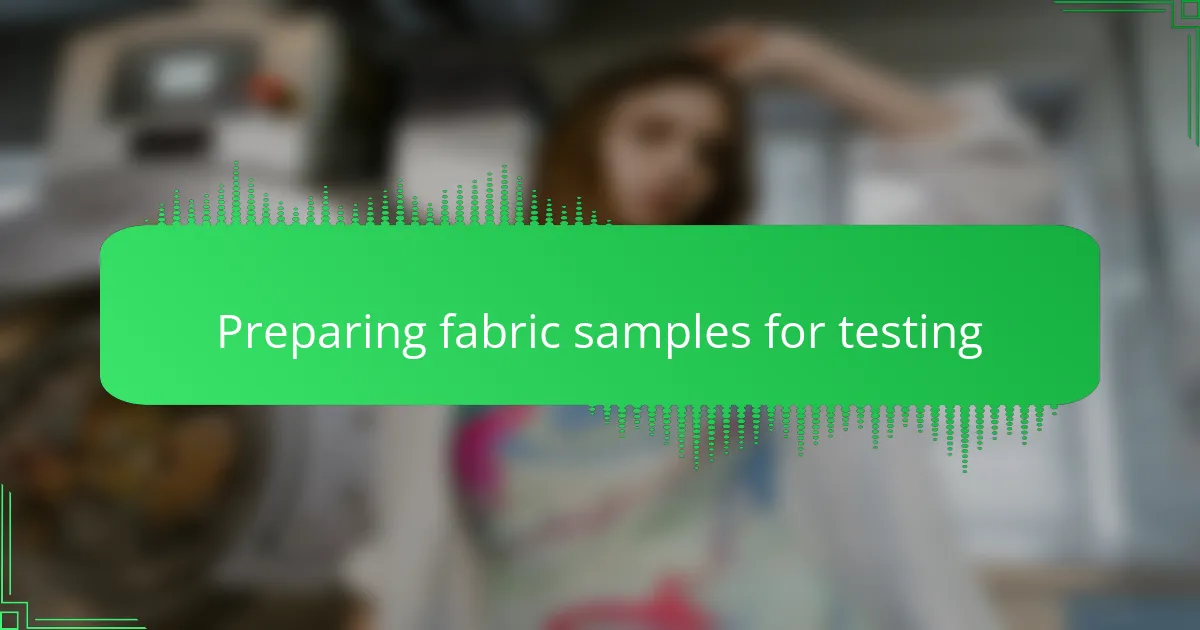
Preparing fabric samples for testing
Preparing fabric samples is a step I never rush through because the right preparation can make all the difference when testing colors. I like to start with clean, pre-washed fabric to mimic the real conditions of a finished T-shirt. It’s a simple step, but skipping it once taught me how misleading unwashed fabric can be—it just doesn’t absorb dyes the same way.
| Preparation Step | Reason & Personal Insight |
|---|---|
| Pre-washing Fabric | Removes any sizing or chemicals; ensures true color absorption. I learned this the hard way after my first batch washed out unevenly. |
| Cutting Consistent Sample Sizes | Allows for accurate comparison between tests. I use small uniform squares, which makes side-by-side evaluation much easier. |
| Labeling Samples | Keeps track of different dyes or methods used. Without clear labels, I found myself guessing results later, and that was frustrating. |
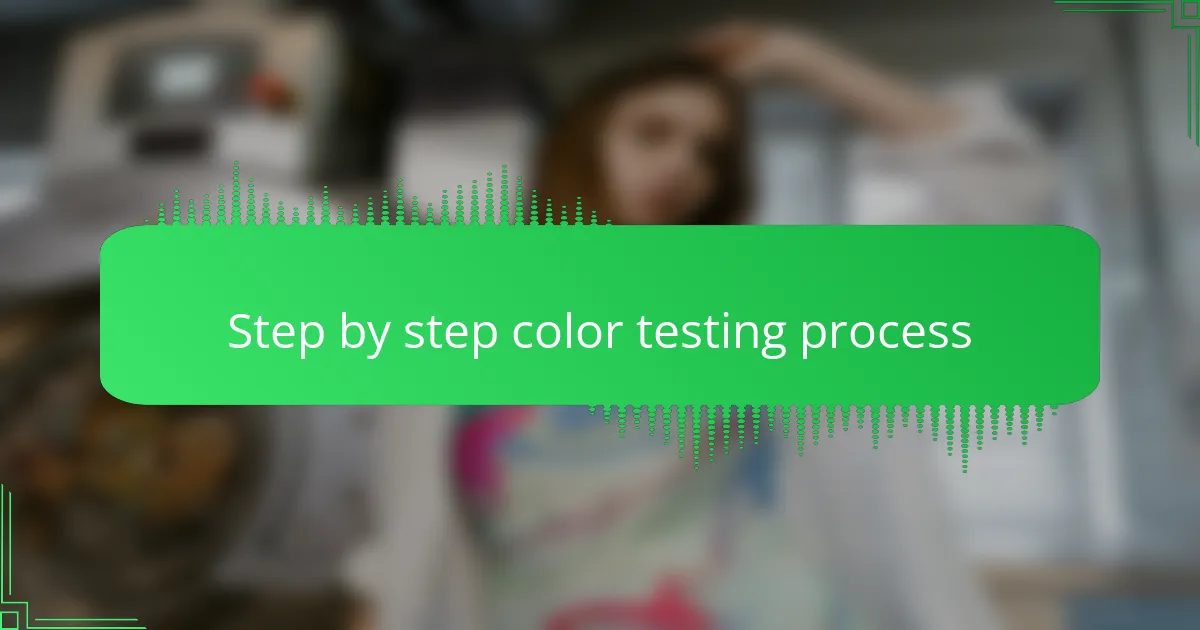
Step by step color testing process
The first step in my color testing process is always to apply the dye or print method onto the prepared fabric sample carefully. This hands-on stage lets me see how the color interacts with the fabric’s texture and weave. Have you ever wondered why some colors bleed or look patchy? It often comes down to how the dye absorbs into the textile, and seeing this firsthand saves me from surprises down the road.
After applying the color, I let the sample dry completely, because wet fabric can distort the true shade. I remember rushing this once and ended up thinking a color was off when it was just the moisture playing tricks on me. Patience here is key — letting the sample rest ensures the color settles exactly as it will on the finished T-shirt.
Finally, I evaluate the dried sample under different lighting conditions, usually natural daylight and a warm indoor light. This step is a game-changer because colors can look wildly different depending on the light source. To avoid embarrassing mismatches, I make notes about any shifts I observe and decide if adjustments are necessary. Have you ever ordered a T-shirt and been shocked by the color in person? That’s exactly what I’m trying to prevent.
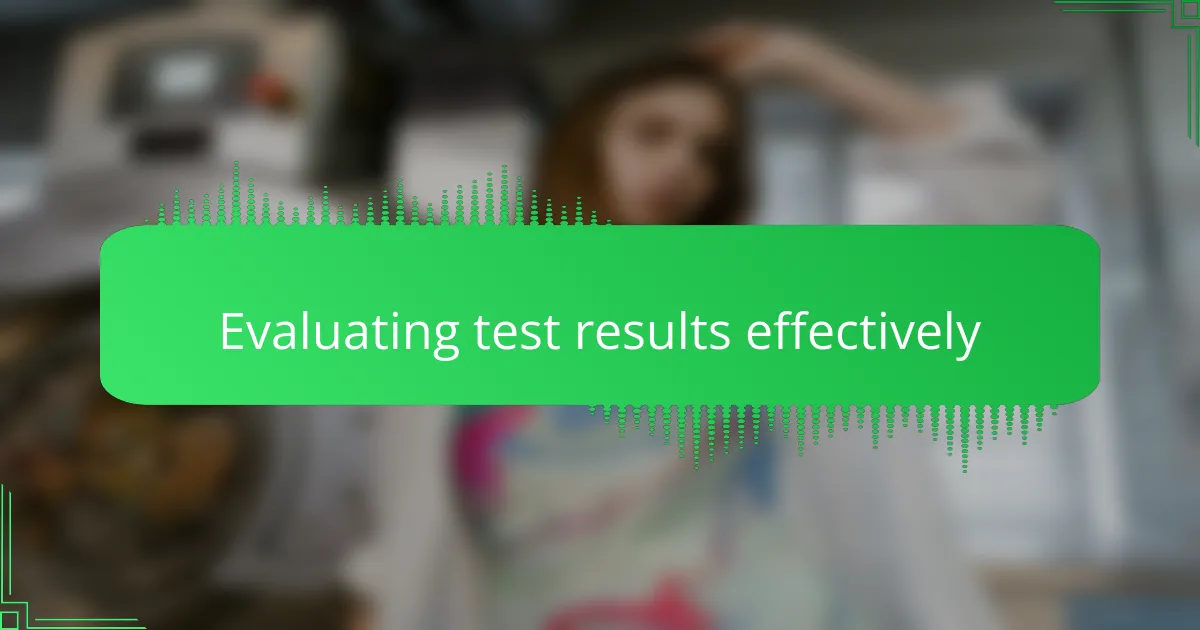
Evaluating test results effectively
When it comes to evaluating test results effectively, I’ve learned that patience and attention to detail are non-negotiable. Sometimes a color might look spot-on at first glance, but a closer inspection under varied lighting can reveal subtle shifts that make all the difference. Have you ever thought a color was perfect, only to realize later it didn’t quite match your expectations? I certainly have, and that experience taught me to look beyond the obvious.
Taking detailed notes during the evaluation process has become a habit for me. I jot down everything from the light source used to how the fabric behaved with the dye. This record helps me connect the dots between what I see and how the final product might turn out—sometimes those notes save me from repeating costly mistakes. Trust me, there’s nothing worse than scrambling to fix a color issue after bulk production.
Another thing I always ask myself is, “Does this color feel true to the original design intent?” It’s easy to get lost in technicalities, but ultimately, the color has to resonate with the vision behind the T-shirt. When the test results align with that feeling, you know you’re on the right track. If not, that’s your cue to tweak and retest until it’s just right.
